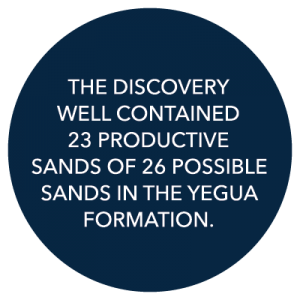Oil & Gas
PROGRAM MANAGEMENT
Davis Bros. and its affiliate company Davis Holdings are diversified independent oil and gas exploration and production companies. Our involvement in the petroleum industry has continued without interruption since 1924.
Oil & Gas
PROGRAM MANAGEMENT
Davis Bros. and its affiliate company Davis Holdings are diversified independent oil and gas exploration and production companies. Our involvement in the petroleum industry has continued without interruption since 1924.
“TO BE IN THE TOP 10% IN EVERYTHING THAT WE DO.” — Ross Davis, Managing Principal, About Goals
The company maintains offices in Tulsa, Oklahoma and in Houston, Texas. Our activities are primarily concentrated in central and western Oklahoma, West Texas, and the Texas Gulf Coast. Davis Bros. and Davis Holdings have historically conducted exploration activities in association with substantial corporate and sophisticated private investors. Our projects have ranged from single exploratory prospects to multi-year, multi-well programs. In our early days, exploratory programs were conducted on behalf of individual investors, concentrating in western Kansas.
Mississippi-Alabama Program
A major program conceived and implemented by Davis Bros. in the 1970s was its participation in the efforts of Davis McCoy, Inc. This program acquired in excess of 400,000 net acres of leases and 2,000 miles of seismic data over a three-year period. The first prospect drilled in this program yielded an outstanding Smackover discovery, which opened up the Chunchula Field in Mobile County, Alabama, a new Smackover producing province. Reservoir studies of this field conducted by the operator, Union Oil of California, indicated recoverable condensate reserves of 102 million barrels and recoverable gas reserves of 179 billion cubic feet, or Bcf.
During the term of the project, an agreement was effected with the largest independently owned oil partnership in Norway to participate in the venture. This Norwegian group was a consortium of 200 of the largest industrial concerns in Norway with operations in the British and Dutch sectors of the North Sea, Guatemala, and Peru.
Alabama Ferry Field
Davis Bros. was responsible for the northern explorations of the Alabama Ferry Field in Leon County, Texas. The field, initially discovered by Murphy Baxter in 1983, produces from the Glenn Rose Formation in the “D” interval over a large area ranging in depth from 9,000 to 10,500 feet. It is the largest Cretaceous aged discovery of its kind since the Giant Fairway Field found in the 1960s.
Lucky Leon Field
![]()

In mid-2002, Davis Bros. discovered the Lucky Leon Field, the largest discovery in the non-pressured Yegua in Southeast Texas in the last 30 years.
The prospect had been generated eight years earlier but has not been drilled due to various factors including permitting problems with the Interior Department. The discovery was made beneath the Big Thicket National Preserve, and special rules needed to be developed and agreed to by the Interior Department and Davis Bros. These rules were later adopted by all the national preserves all over the United States and became known as the “Davis Template.”
The discovery well contained 23 productive sands of 26 possible sands in the Yegua Formation. Reserves are expected to be in excess of 2.5 million bbls and over 30 Bcf.
Mississippi-Alabama Program
A major program conceived and implemented by Davis Bros. in the 1970s was its participation in the efforts of Davis McCoy, Inc. This program acquired in excess of 400,000 net acres of leases and 2,000 miles of seismic data over a three-year period. The first prospect drilled in this program yielded an outstanding Smackover discovery, which opened up the Chunchula Field in Mobile County, Alabama, a new Smackover producing province. Reservoir studies of this field conducted by the operator, Union Oil of California, indicated recoverable condensate reserves of 102 million barrels and recoverable gas reserves of 179 billion cubic feet.
During the term of the project, an agreement was effected with the largest independently owned oil partnership in Norway to participate in the venture. This Norwegian group was a consortium of 200 of the largest industrial concerns in Norway with operations in the British and Dutch sectors of the North Sea, Guatemala, and Peru.
Alabama Ferry Field
Davis Bros. was responsible for the northern explorations of the Alabama Ferry Field in Leon County, Texas. The field, initially discovered by Murphy Baxter in 1983, produces from the Glenn Rose Formation in the “D” interval over a large area ranging in depth from 9,000 to 10,500 feet. It is the largest Cretaceous aged discovery of its kind since the Giant Fairway Field found in the 1960s.
Lucky Leon Field
![]()

In mid-2002, Davis Bros. discovered the Lucky Leon Field, the largest discovery in the non-pressured Yegua in Southeast Texas in the last 30 years.
The prospect had been generated eight years earlier but has not been drilled due to various factors including permitting problems with the Interior Department. The discovery was made beneath the Big Thicket National Preserve, and special rules needed to be developed and agreed to by the Interior Department and Davis Bros. These rules were later adopted by all the national preserves all over the United States and became known as the “Davis Template.”
The discovery well contained 23 productive sands of 26 possible sands in the Yegua Formation. Reserves are expected to be in excess of 2.5 million bbls and over 30 Bcf.